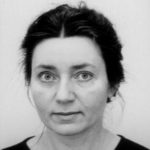Lien vers Pubmed [PMID] – 29023569
PLoS ONE 2017;12(10):e0186206
Phospholipases A2 (PLA2s) are enzymes found throughout the animal kingdom. They hydrolyze phospholipids in the sn-2 position producing lysophospholipids and unsaturated fatty acids, agents that can damage membranes. PLA2s from snake venoms have numerous toxic effects, not all of which can be explained by phospholipid hydrolysis, and each enzyme has a specific effect. We have earlier demonstrated the capability of several snake venom PLA2s with different enzymatic, cytotoxic, anticoagulant and antiproliferative properties, to decrease acetylcholine-induced currents in Lymnaea stagnalis neurons, and to compete with α-bungarotoxin for binding to nicotinic acetylcholine receptors (nAChRs) and acetylcholine binding protein. Since nAChRs are implicated in postsynaptic and presynaptic activities, in this work we probe those PLA2s known to have strong presynaptic effects, namely β-bungarotoxin from Bungarus multicinctus and crotoxin from Crotalus durissus terrificus. We also wished to explore whether mammalian PLA2s interact with nAChRs, and have examined non-toxic PLA2 from porcine pancreas. It was found that porcine pancreatic PLA2 and presynaptic β-bungarotoxin blocked currents mediated by nAChRs in Lymnaea neurons with IC50s of 2.5 and 4.8 μM, respectively. Crotoxin competed with radioactive α-bungarotoxin for binding to Torpedo and human α7 nAChRs and to the acetylcholine binding protein. Pancreatic PLA2 interacted similarly with these targets; moreover, it inhibited radioactive α-bungarotoxin binding to the water-soluble extracellular domain of human α9 nAChR, and blocked acetylcholine induced currents in human α9α10 nAChRs heterologously expressed in Xenopus oocytes. These and our earlier results show that all snake PLA2s, including presynaptically active crotoxin and β-bungarotoxin, as well as mammalian pancreatic PLA2, interact with nAChRs. The data obtained suggest that this interaction may be a general property of all PLA2s, which should be proved by further experiments.

